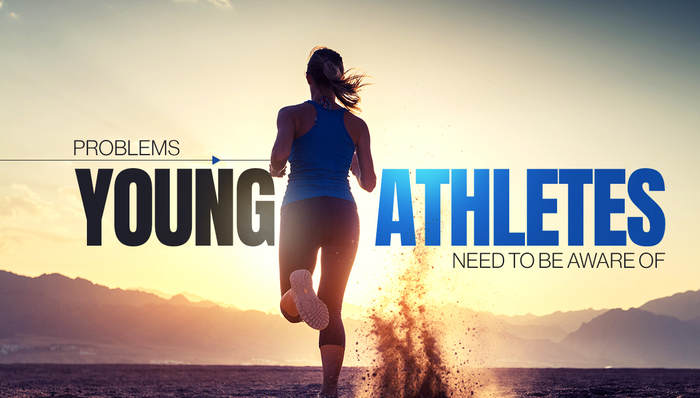
07 Jun Problems Young Athletes Need to Be Aware Of
Participating in sports has a number of benefits for young athletes, but it also has its hazards. The Centers for Disease Control and Prevention (CDC) has reported that over 2.6 million children 19 and under end up being treated in hospital emergency rooms for sports injuries. A sports injury can affect males and females of all ages and athletic levels. It can keep you on the sidelines for weeks or months on end, and that’s simply not acceptable for most athletes. Here are a few problems young athletes need to be aware of.
Sprains and Strains
Sprains and strains are a very common type of sports injury. A sprain is an injury to a ligament—a band of tissue that connects bones to a joint—while a strain involves muscles and/or tendons. A strain involving a muscle is sometimes called a “pulled muscle.” Sprains and strains are common injuries in almost any sport.
Elbow Injuries
Tennis elbow and golfer’s elbow are extremely common overuse sports injuries. They cause pain around the elbow joint and are generally seen in athletes who participate in sports that require repetitive wrist extension and twisting, such as tennis, golf and baseball. Symptoms of elbow injuries are pain, stiffness, tingling or numbness, and pain when gripping or lifting.
Shoulder Injuries
If your sport requires repetitive overhead movements—such as swimming, tennis and baseball—your shoulder is at risk There are many different treatment methods available for shoulder pain, most of which offer helpful yet short-term solutions. If you are looking for a long-term solution that will help heal your shoulder, our regenerative medicine therapies may be the right choice for you.
ACL Injuries
An ACL injury is a type of sprain, affecting the anterior cruciate ligament (ACL), the most commonly injured ligament in the knee. A torn ACL of any grade is caused by sudden twisting of the knee. Sudden changes in direction while running or falling on one’s knee can also cause a torn ACL. The ACL injury has three grades:
- Grade I is the least severe. The ligament is stretched but not torn, and there is only a little tenderness and swelling. The knee does not feel unstable or give out when being used.
- In Grade II, the ligament is partially torn, and there is moderate swelling and tenderness. The knee may give out when being used.
- A Grade III injury is the most severe. The ligament is completely torn or ruptured, but there is surprisingly little pain. The amount of swelling can vary from a little to a lot. The ligament cannot control the knee, so it will feel unstable and give out.
Girls are more susceptible to torn ACLs than boys. Basketball players, soccer players and football players are particularly vulnerable.
Repetitive Motion Injuries
A young athlete can also be prone to repetitive motion injuries like stress fractures or tendinitis (inflammation of a tendon). This type of sports injury is caused by overuse of the affected muscle, bone and/or tendon. About 50 percent of all sports injuries treated by doctors are repetitive motion injuries. Tendinitis and bursitis (inflammation of a bursa) are the most common types. Repetitive motion injuries are most common in the knees, elbows, shoulders and heels.
Progressive Rehabilitation Medicine specializes in the non-surgical care of a wide range of pain, orthopedic and neurologic disorders by employing the latest most advanced conservative treatment options to help reduce pain, restore functional mobility and improve quality of life. Call us today to schedule an appointment. (319)-774-8143


No Comments